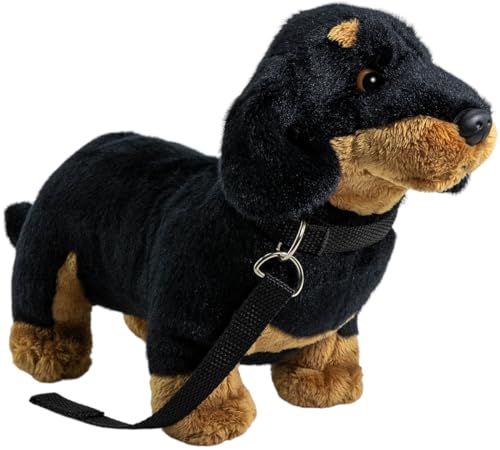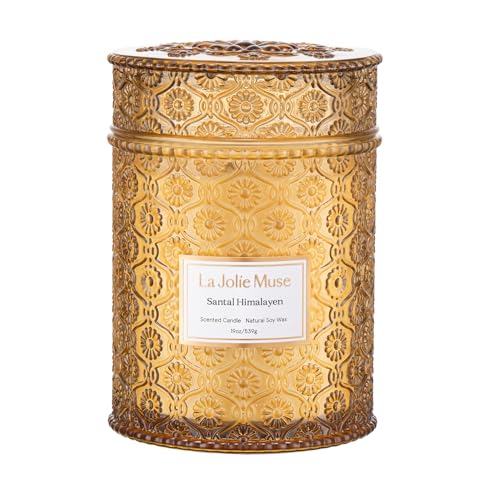








Curious about the distinct physique of these charming canines? The elongated bodies of dachshunds stem from selective breeding aimed at creating a dog capable of burrowing into badger dens. This unique design made them exceptional hunters, particularly in the fields of tracking and flushing out prey.
These little hunters possess a remarkable skeletal structure. Their vertebrae are longer compared to other breeds, contributing to that iconic shape. The change in proportions provides them with agility and the ability to twist their bodies while chasing after quarry in tight spaces.
While their form offers advantages in hunting, it also requires special care. Owners must be vigilant about their pets’ health, especially regarding spinal issues. Limitations on jumping and climbing are crucial to maintain their well-being. Regular vet check-ups and a proper diet can help prevent common ailments associated with their unique structure.
Having a dachshund myself, I’ve learned the importance of gentle handling and proper exercise. Their playful nature contrasts with their physical vulnerabilities, making it essential to balance their energy with safety. Understanding their anatomy not only enriches the experience of ownership but also fosters a deeper bond with these delightful companions.
Unique Body Structure of Dachshunds
These charming canines possess a distinct physique, characterised by an elongated body and shorter legs, which is a result of selective breeding. Originally, their shape was developed to aid in hunting badgers and other burrowing animals. This unique form allows them to navigate tight spaces while maintaining agility and effectiveness during hunts.
Their length, coupled with a robust build, contributes to their ability to dig and manoeuvre through underground tunnels. This heritage informs much of their behaviour today, as they often display a spirited attitude and determination reflective of their hunting lineage.
Maintaining a balanced diet is crucial for these pets, especially considering their specific body structure. Choosing the best lightly cooked dog food can significantly affect their overall health, ensuring that they remain energetic and lively, which is vital given their propensity for back issues due to their elongated spine.
Regular exercise is equally important. Short, frequent walks combined with playtime can help keep them fit and prevent potential health complications associated with their unique build. Their playful nature often leads to a strong bond with their owners, making them excellent companions.
The Origins of the Dachshund’s Unique Body Shape
The distinct physique of this breed originates from its historical purpose: hunting burrowing animals. The elongated torso and short legs were designed for maneuvering through tunnels and dens. This anatomical structure enabled effective pursuit of prey such as badgers and rabbits.
Key factors contributing to this unusual body shape include:
- Selective Breeding: Breeders focused on enhancing traits that aided in hunting small game. This led to a preference for longer bodies, allowing for easier navigation in tight spaces.
- Genetic Variations: Specific genetic markers associated with body shape were favoured over generations. This intentional selection resulted in the characteristic appearance we see today.
- Functional Adaptations: The elongated back provided an advantage in terms of agility and flexibility, crucial for tracking and cornering prey.
Additionally, the breed’s development in Germany during the 15th century played a significant role. Initially bred for a purpose, they quickly became companions as their hunting capabilities evolved into a beloved family pet. The combination of functionality and affection ensured the preservation of their unique build.
Modern times have shifted their role from hunters to household companions, yet their historical design remains a fascinating aspect of their identity.
How Long Bodies Benefit Hunting and Burrowing
Long bodies provide a tactical advantage in hunting and burrowing activities. With a streamlined shape, these canines can navigate narrow tunnels and underground spaces, allowing them to pursue small game effectively. Their elongated torso is perfect for reaching into burrows where prey like rabbits or badgers hide.
When I take my Dachshund out for walks, I often notice how she instinctively seeks out holes and crevices. It’s fascinating to watch her wiggle her body into tight spots, something that shorter-legged breeds struggle with. This design not only aids in hunting but also keeps them safe from larger predators by allowing quick escapes through tight spaces.
The unique structure also enhances their agility, enabling swift movements while chasing down prey. The long back, when combined with powerful limbs, creates a remarkable balance, making it easier to turn and manoeuvre in the field. This combination of speed and flexibility is a significant advantage when pursuing agile animals.
Additionally, their keen sense of smell, paired with their physical traits, makes them effective tracking companions. The long body allows for a stable stance while sniffing the ground, ensuring they can pick up scents effectively without losing balance. I’ve seen my furry friend stop, sniff, and then dart off in the direction of an interesting scent, showcasing how well-suited she is for this kind of activity.
In summary, the elongated shape supports their hunting instincts and burrowing capabilities, allowing them to thrive in environments where other breeds may struggle. This unique adaptation is a reminder of how each breed has been shaped by its purpose over generations.
Genetic Factors Influencing the Dachshund’s Length
The unique proportions of the Dachshund stem from specific genetic traits. The breed features genes that dictate body structure, particularly the long spinal column and shorter legs. This combination isn’t random; it results from selective breeding aimed at enhancing hunting abilities.
Key Genetic Influences
- Axial Skeleton Genes: Variations in genes like the Fgf4 gene play a significant role in the breed’s elongated spine. Mutations in this gene can lead to the distinctive body shape.
- Chondrodysplasia: This genetic condition results in the short-limbed appearance. It contributes to the compact stature, allowing these canines to move efficiently through narrow burrows.
- Selective Breeding: Over generations, breeders have focused on traits that enhance hunting prowess, inadvertently solidifying the elongated body type.
Physical Implications
The genetic makeup not only defines the length but also influences health. While a longer body provides advantages in hunting, it can lead to certain health concerns, particularly spinal issues. Maintaining a healthy weight and ensuring regular vet check-ups are crucial for preventing potential problems associated with their unique anatomy.
Understanding these genetic factors provides insight into why this breed is so distinct and helps owners appreciate the careful breeding that has shaped these remarkable companions.
Comparing the Dachshund’s Anatomy with Other Breeds
The unique structure of the Dachshund sets it apart from many canine companions. Their elongated torso and short legs create a distinctive silhouette, which is notably different from breeds like the Labrador Retriever or the German Shepherd. Observing these differences can provide insights into each breed’s functional design and purpose.
Take a look at the following comparison of key anatomical features between the Dachshund and a few other popular breeds:
| Feature | Dachshund | Labrador Retriever | German Shepherd |
|---|---|---|---|
| Body Length | Long (approximately 30% longer than height) | Proportional (height and length are roughly equal) | Proportional (height and length are roughly equal) |
| Leg Length | Short (stout, powerful legs) | Medium (strong but proportionate) | Medium (longer legs for agility) |
| Weight Range | 7-14 kg (depending on variety) | 25-36 kg | 22-40 kg |
| Chest Shape | Deep and narrow | Broad and deep | Broad and deep |
| Tail | Long and tapering | Medium length, thick at the base | Long and bushy |
In my experience with my own Dachshund, I’ve found that the peculiar build allows for remarkable agility in tight spaces, especially when we’d venture out to explore new trails. While walking alongside larger breeds, it’s evident how their body structure suits different purposes, such as endurance and speed. The compact frame of my Dachshund makes it easy for him to navigate through bushes and undergrowth, proving advantageous during our adventures.
Physical traits also influence temperament and behaviour. Dachshunds often display a curious nature, driven by their instinct to burrow and hunt, while larger breeds may exhibit more protective tendencies due to their size and strength. It’s fascinating to observe how these anatomical variances impact personality traits and activity levels.
Understanding the differences in anatomy not only enhances appreciation for each breed but also informs training and care approaches. For instance, due to the Dachshund’s elongated spine, extra caution is essential when it comes to jumping or climbing, as this can lead to back issues. In contrast, larger breeds may require more space to run and play, influencing training environments significantly.
Implications of Body Length on Health and Mobility
Maintaining a healthy weight is paramount for these elongated canines. Their unique shape predisposes them to specific health challenges, particularly concerning their spine. Excess weight can exacerbate issues such as intervertebral disc disease. Regular exercise and a balanced diet can mitigate these risks significantly.
Spinal Health Considerations
Due to their extended backs, these breeds are susceptible to spinal problems. It’s advisable to avoid activities that involve jumping or climbing, as these can strain their backs. Instead, opt for low-impact exercises like walking on flat surfaces. Regular veterinary check-ups are essential to catch any potential issues early.
Joint Mobility and Aging
As these companions age, joint problems may arise, particularly in the hips and elbows. Providing joint supplements can enhance mobility and reduce discomfort. Engaging in gentle, consistent exercise helps maintain their range of motion. Always monitor for signs of pain or stiffness, and consult a vet if concerns arise.
Incorporating safe play and keeping their living environment free from hazards also supports their physical well-being. Small adjustments can make a significant difference in their quality of life.









